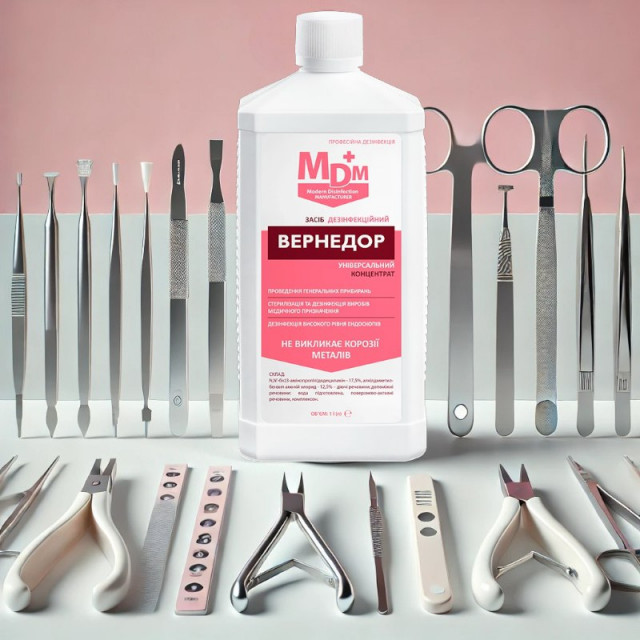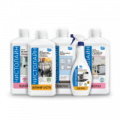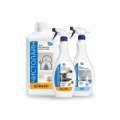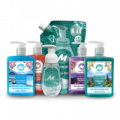Cleaning, disinfection and sterilization of manicure tools: how to treat manicure tools correctly?
Cleaning, Disinfection, and Sterilization of Manicure Tools: How to Properly Treat Manicure Instruments?
Almost every woman uses a manicure service every 3-4 weeks. However, not everyone remembers that it is crucial to inquire about how the manicure tools are processed. During the procedure, the tools come into contact with the client's skin, and in cases of damage, potentially with their blood. Therefore, the risk of transmitting various diseases is very high. But how should manicure tools be treated?
WHAT CAN YOU CONTRACT DURING A MANICURE?
The importance of disinfecting manicure tools becomes clear once you look at the list of diseases that can be contracted in a manicure salon. Among them are:
-
Bacterial Infections. The surface of human skin is home to numerous bacteria, some of which can be very harmful to health. For instance, the presence of staphylococci or streptococci in the blood can lead to paronychia—an acute purulent inflammation of the tissues—or impetigo—a bacterial infection of the upper layers of the skin. In the case of paronychia, the affected tissues become swollen, inflamed, and painful. Impetigo is characterized by vesicular purulent rashes that later burst and form sores.
-
Fungal Infections. These are very common infections that can be contracted in a manicure salon if proper disinfection of manicure tools is not performed. Fungi can affect the skin and nails, leading to nail deformation and discoloration, and in severe cases, even nail loss. Fortunately, such infections can be treated, though the therapy often takes a long time, and one will have to completely refrain from manicures during the treatment period.
-
Severe Life-Threatening Diseases. It is also possible to contract HIV or hepatitis in a manicure salon. Such viruses can enter the body even with minimal skin damage—resulting from a minor injury to the skin or tissues around the cuticle.
HOW SHOULD MANICURE TOOLS BE DISINFECTED?
Disinfecting manicure tools is not the only procedure required for the full safety of the client. According to legislative norms, tools must undergo three stages of processing:
-
Disinfection. This is the first stage, which starts either in the presence of the client or immediately after the procedure. It involves immersing the used tools in a disinfectant solution. This process destroys many pathogens (including yeast-like fungi, hepatitis viruses, many bacteria, and HIV), prevents their spread into the surrounding environment, and prevents them from settling on surfaces. Disinfection of manicure tools is crucial for the safety of both clients and the technician, as the latter is also at risk of infection.
-
Pre-Sterilization Cleaning. At this stage, tools are washed under running water to remove residues of the disinfectant solution and minor contaminants, such as skin remnants, etc. Following this, tools are cleaned with brushes and cotton-gauze swabs. Ultrasonic cleaning devices may also be used.
-
Sterilization. This stage aims to completely eliminate all viruses, bacteria, fungi, and their spores from the surfaces of the tools. Sterilization is usually performed using special equipment. Most professionals prefer dry heat sterilizers, which destroy pathogens through exposure to extremely high temperatures. Ultrasonic sterilizers and autoclaves are also popular. Chemical sterilization agents are available as well. Using a regular oven for sterilization is ineffective.
After all stages of disinfection and sterilization are complete, tools must be stored correctly—in conditions of complete sterility, such as in sterile kraft paper packets or in a sterilization UV chamber.
WHAT DISINFECTION PRODUCTS SHOULD BE CHOSEN FOR MANICURE TOOLS?
The modern market offers a wide range of disinfectants. However, experts recommend not settling for mass-market products or purchasing from unreliable retailers. It is better to choose products from reputable manufacturers who specialize in producing disinfectants, pre-sterilization cleaning, and sterilization products. Their products are certified and guaranteed to perform the required tasks (if the instructions are meticulously followed).
One of the recommended products for disinfection, cleaning, and chemical sterilization of manicure tools is Vernedor. The properties of this solution depend on its dilution and exposure time. Under these conditions, Vernedor exhibits pronounced antimicrobial, antiviral, and antifungal properties, as well as sporicidal activity.
Such a product will always find its place in the cabinet of an experienced manicure professional.
Vernedor is characterized by:
- High effectiveness
- Ease of use
- Convenient storage
- Affordable price
- Convenient packaging
An important advantage of this product is its anti-corrosive properties. Vernedor does not promote metal corrosion, which extends the service life of manicure tools.







